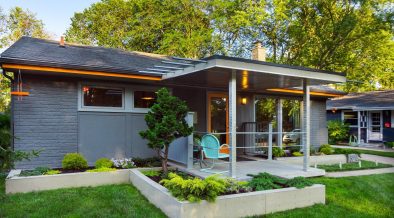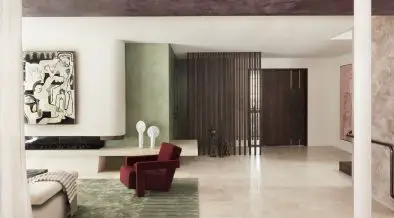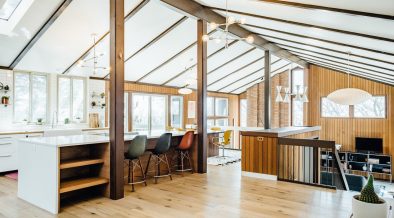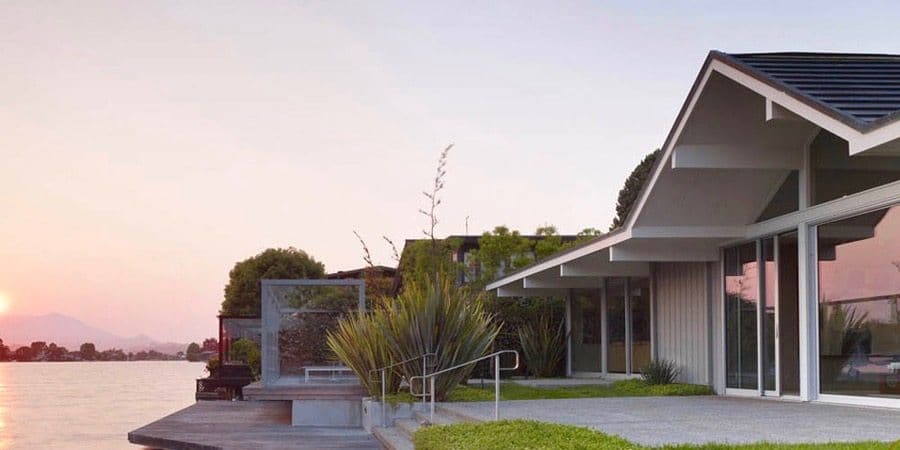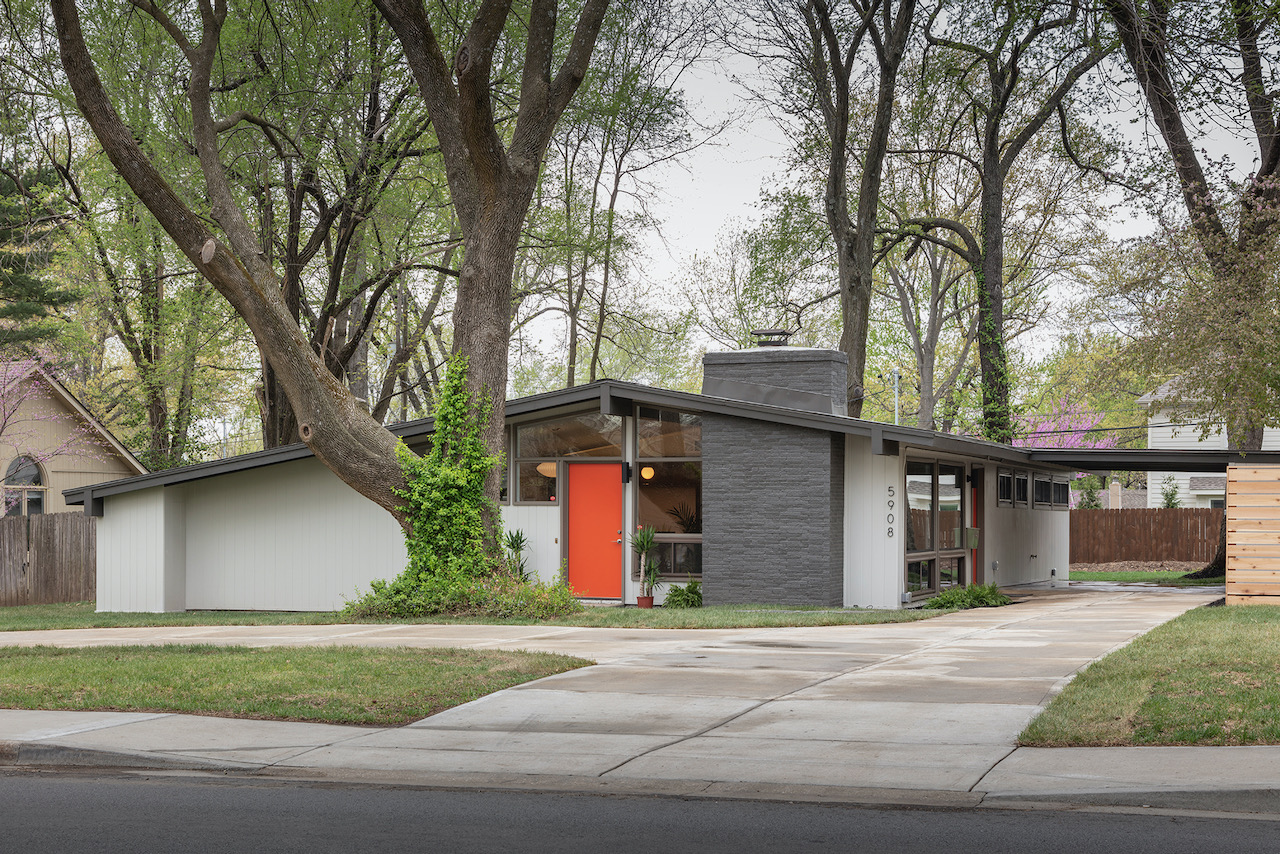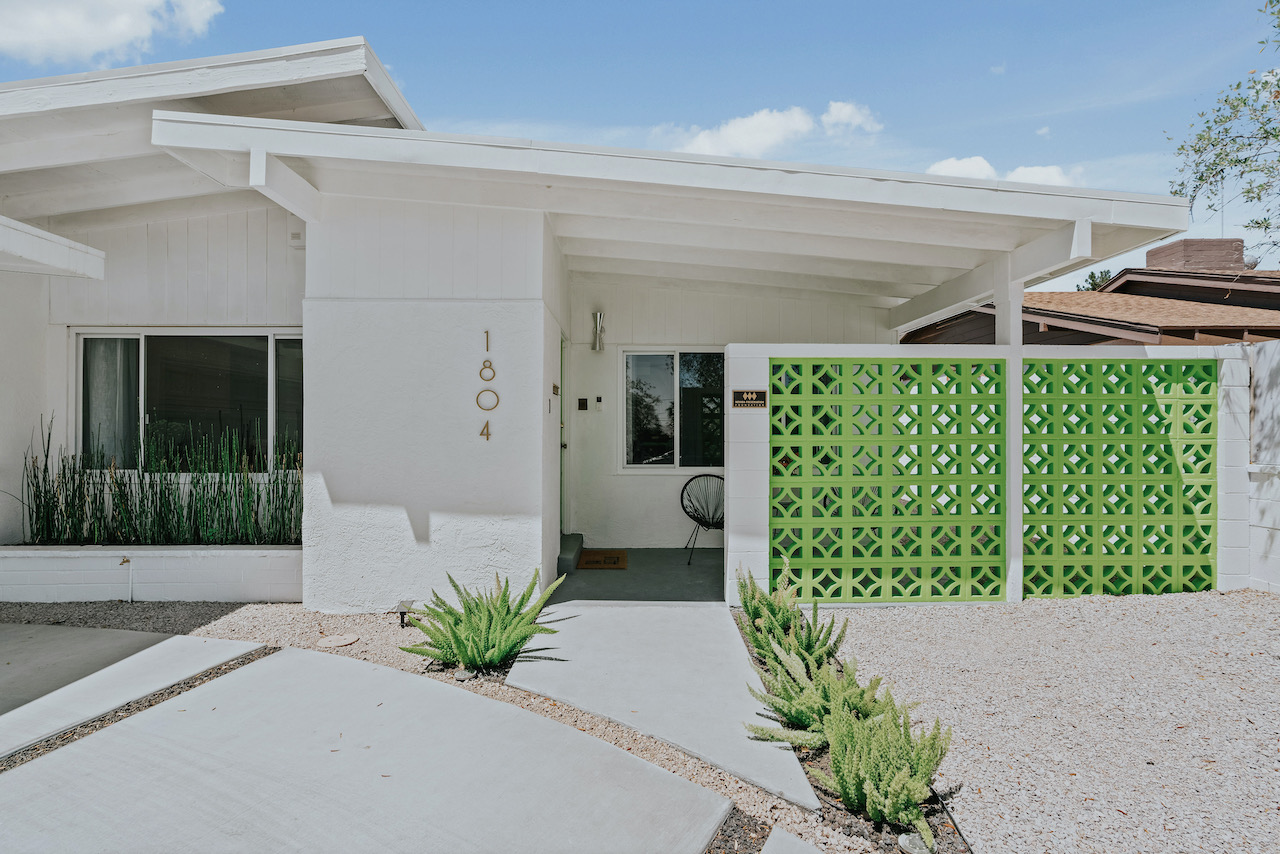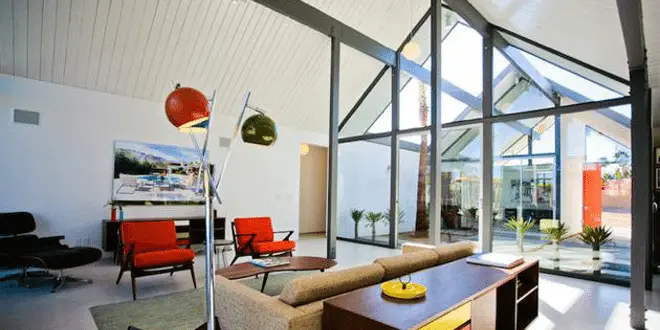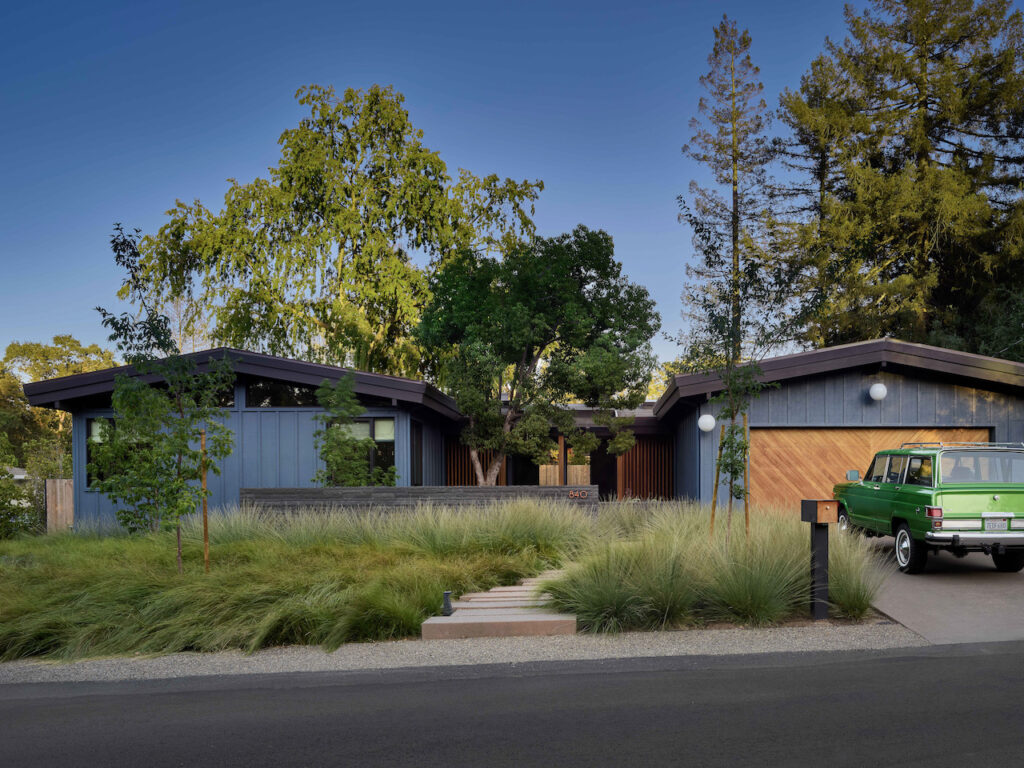
This home in Lafayette, California, was designed by celebrated architect Cliff May – renowned for developing the surburban post-war “dream home”. JKA Design brought this 1950’s home into the 21st century while retaining the original spirit of Cliff May’s intentions.
We spoke with John K Anderson of JKA Design to learn more about the project.
Do you have any details on the client brief?
“They wanted a home that would comfortably support their growing family. This entailed the need for four bedrooms, a large Kitchen/Family Room, a proper garage vs. a carport, a parking space for an Airstream trailer, and a big backyard with a pool and meandering gardens for the kids to play in.”
What mid century influences did you want to include?
“I wanted to preserve and carry through the original, clean lined and timeless crisp details typical of these homes, so I looked to influences like my grandmother’s beautiful 1956 home designed by O’Neil Ford in Texas outside of Dallas, who was a contemporary of Cliff May, as well as Richard Neutra who is, in my opinion, the best architect of the time period.
Cleanly detailed mahogany cabinetry, a vanity cabinet created from a Danish console, classic Heath tile in the baths, and discrete mono-point lighting attached to the beams together carry through the mid century ethos.”
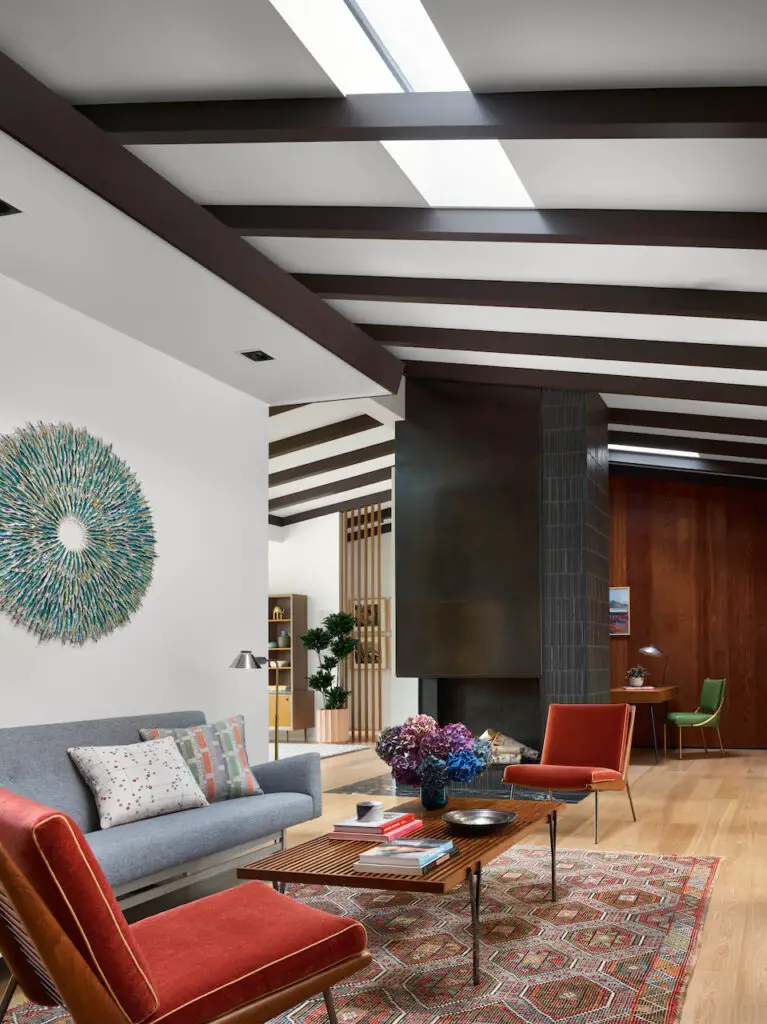
What do you think was so special about the midcentury period in American design?
“There was a boldness to be experimental and to look at our concept of “home” and how we live in such a fresh and unique way. The roots of mid century design began with the Bauhaus schools and expression of structure; the removal of historical references and extraneous details and walls ultimately lead to a seamless blend of interior and exterior.
The postwar period of rapid construction and new ways of thinking, combined with radical changes in technology, took all of these elements to another level.”
What do you know about the original architect who designed the house and have you had experience with his homes before?
“I had not worked on a Cliff May home previously. May is known as the father of the California Ranch House that developed in San Diego, California, and branched out all over the West and Southwest. With its low slung roof, clean simple lines, clerestory windows, radiant heated floors, beamed ceilings, and open floor plans, he was carrying out the vision of the modern home in housing developments all over the West Coast.”
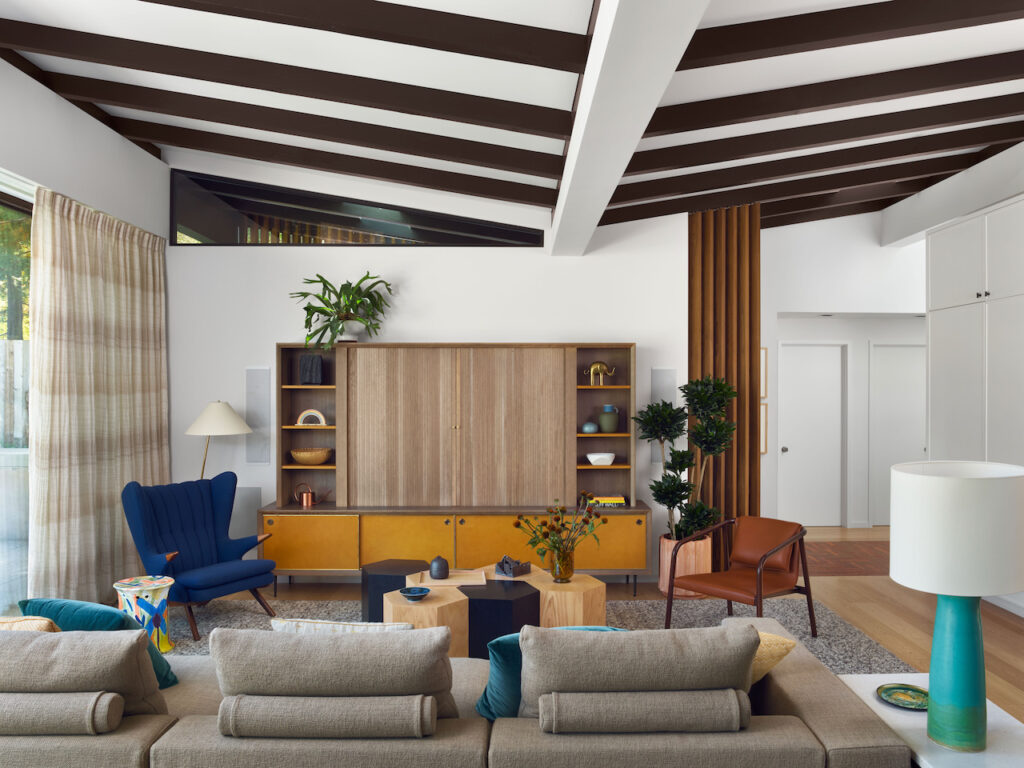
What was the house like previously?
“The house was in almost completely original condition and in a bit of disrepair. There was lots of carpeting, faded wood paneling, aluminum windows and some dry rot. The yard was overgrown, and the concrete patios cracked. It was absolutely ready for a makeover!“
What were your challenges for this project?
“A few! First, the clients wanted higher ceilings throughout. As much as they loved the house, the lower ceilings felt too confining by today’s standards. They decided to raise the entire roof 24” (two feet!).
At first I thought they were crazy to take this on but in the end the feeling in the home is much more expansive and open. Other challenges included replacing all plumbing, electrical, exterior siding, finishes, and windows. It was essentially taken down to the studs and rebuilt.”
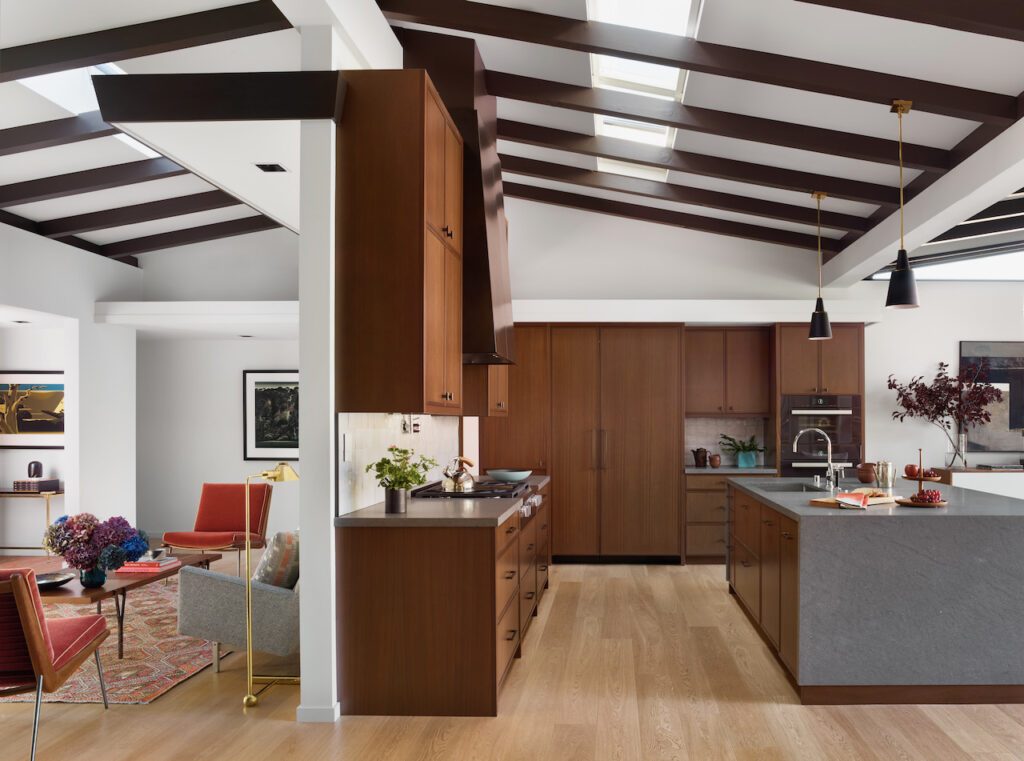
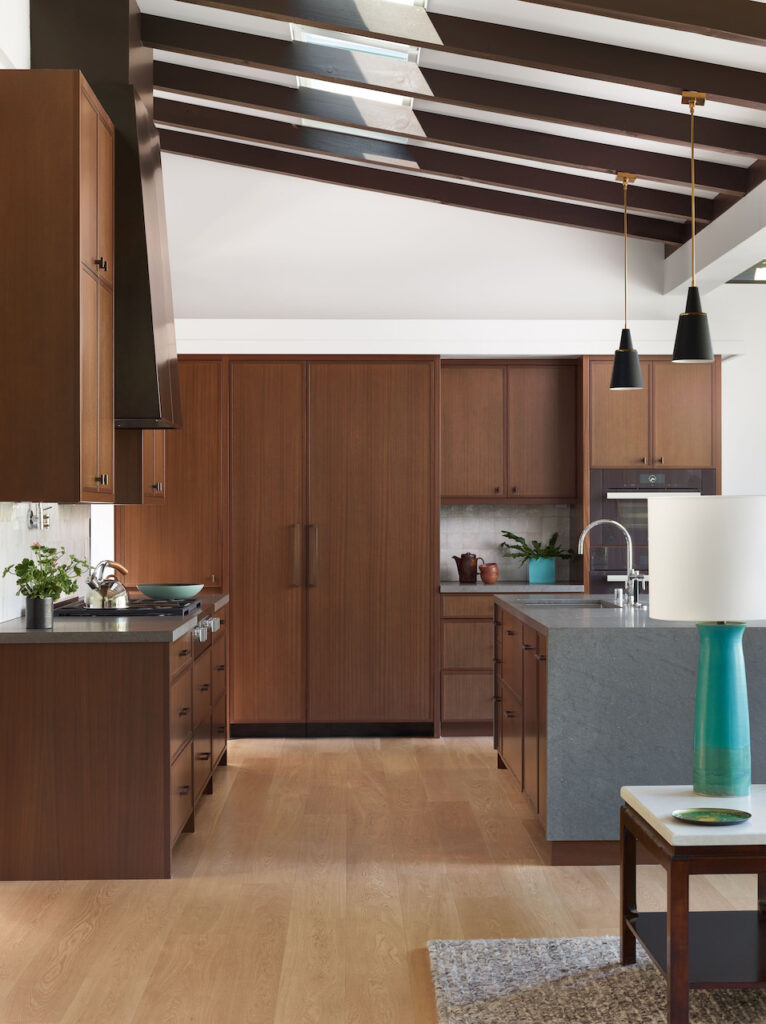
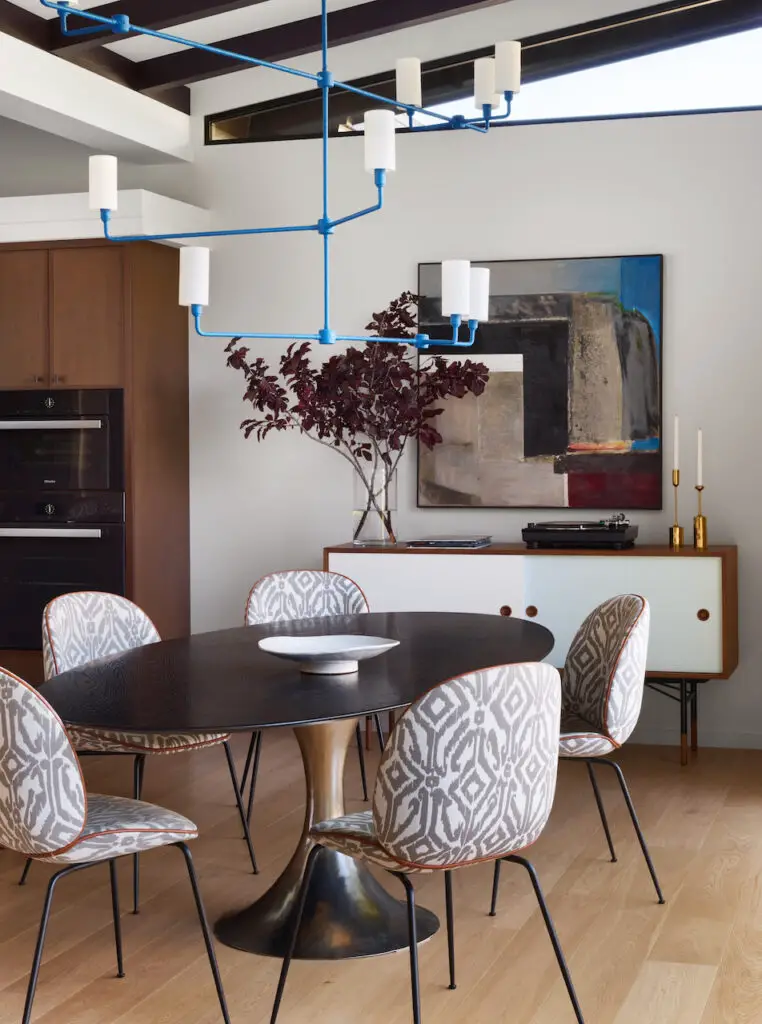
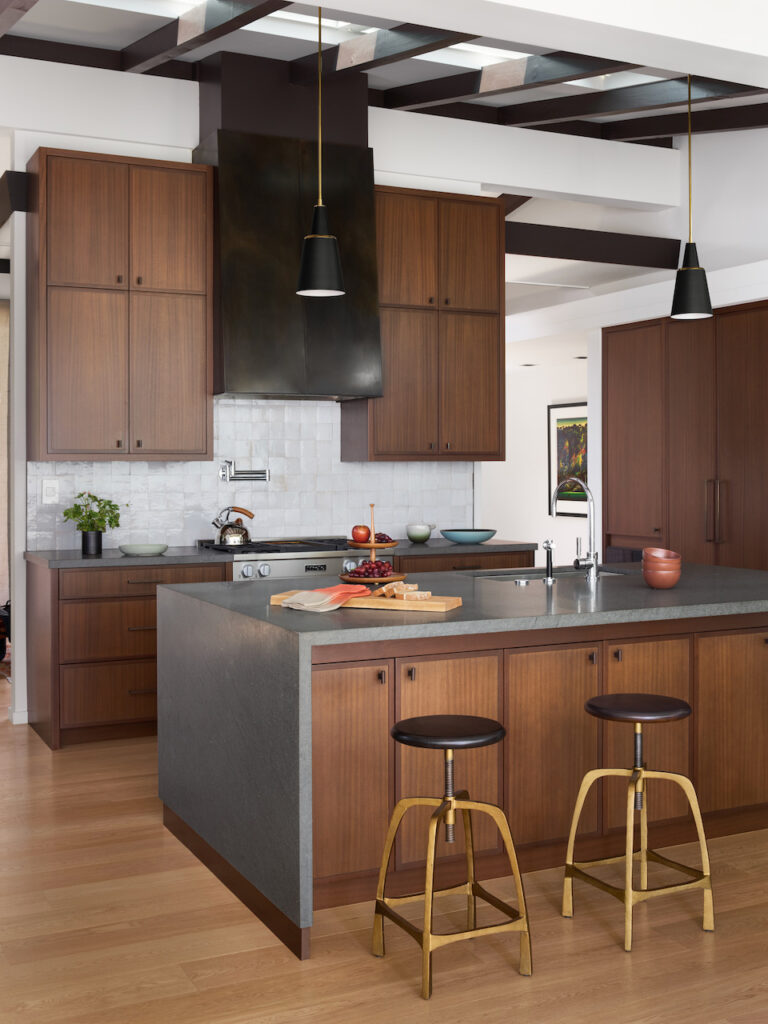
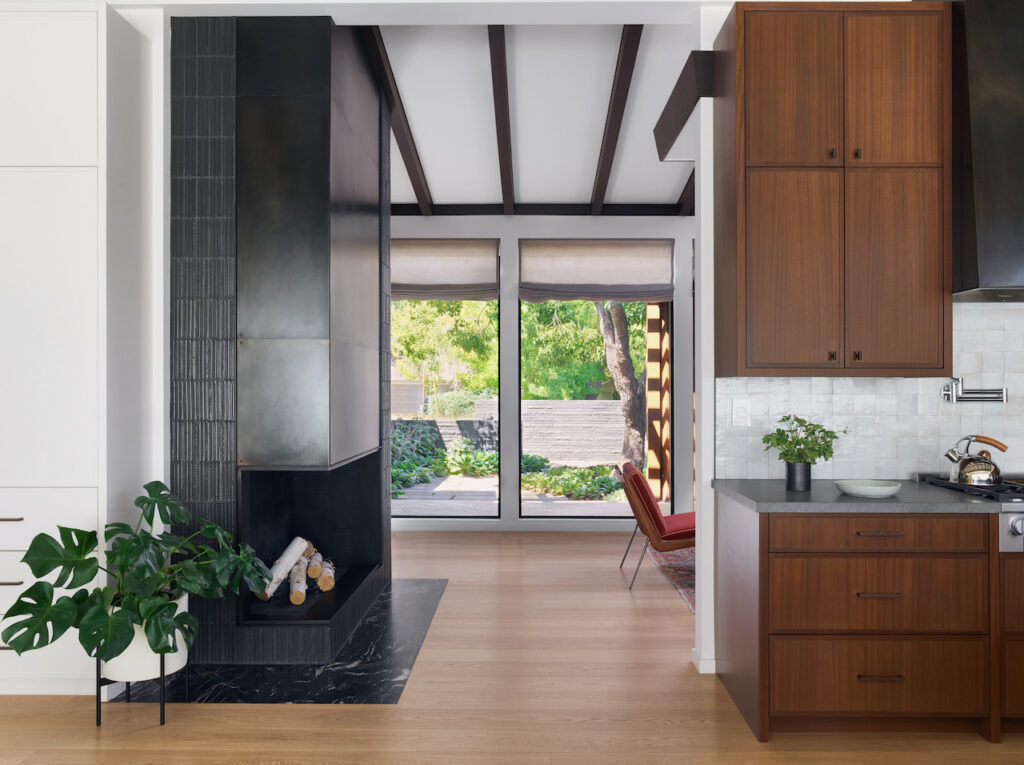
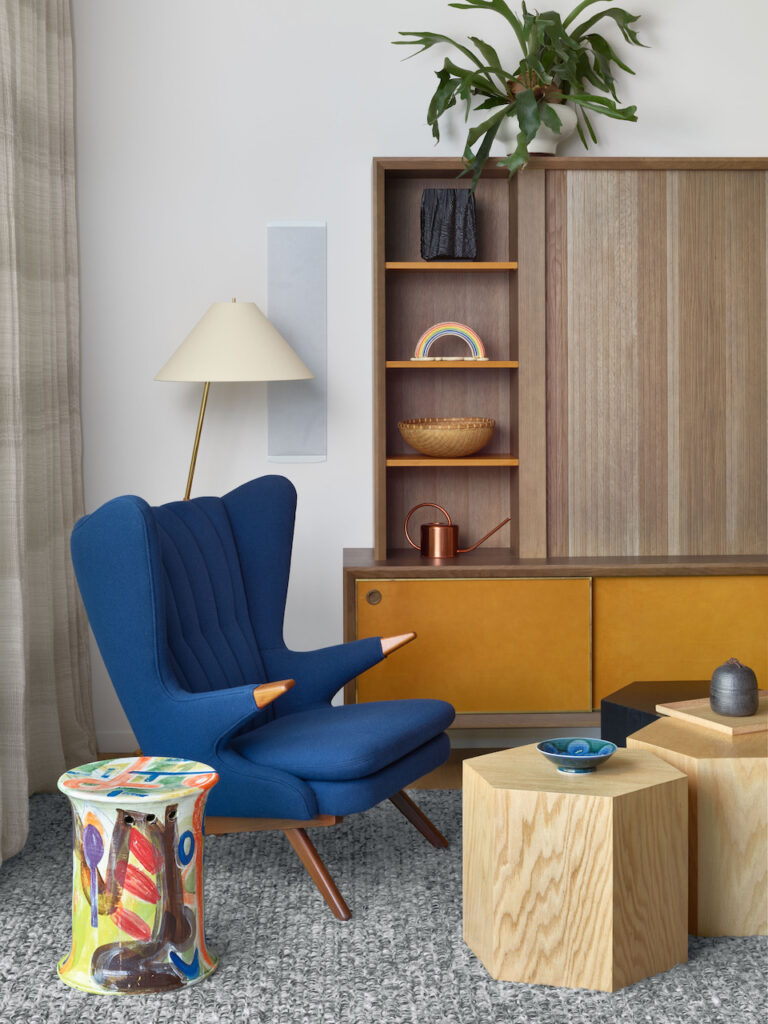
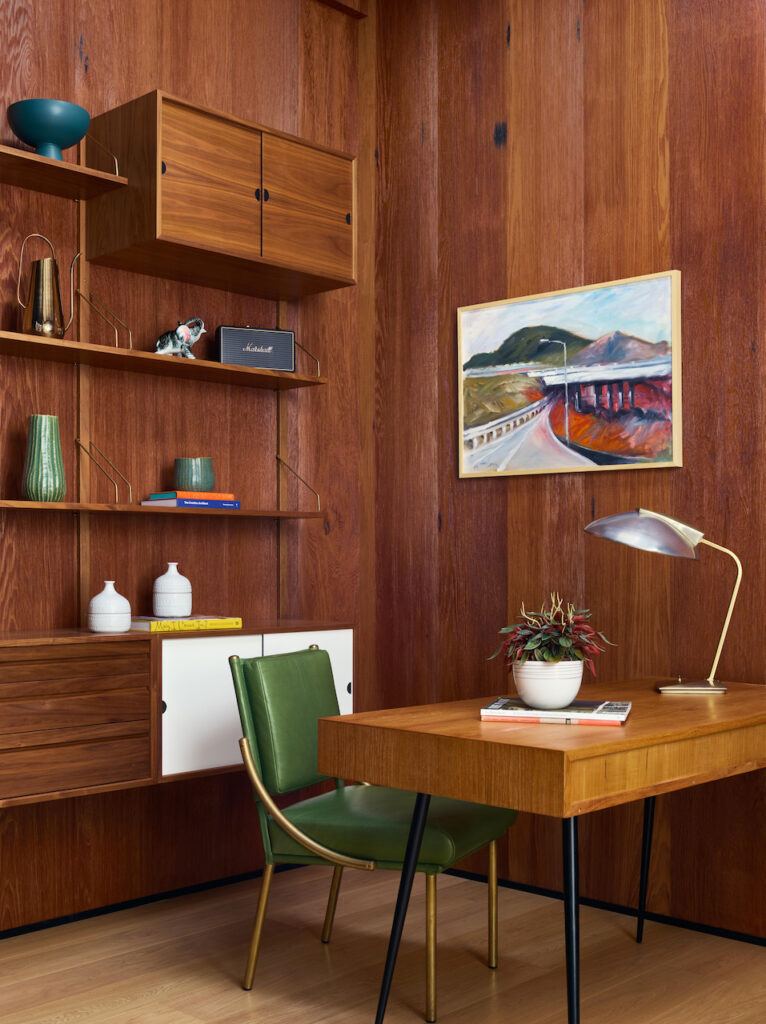

What in your opinion are the best features of the home?
“I really like the open plan, the large expanses of glass, and the original beam and soffit details that emphasize movement and structure. And I especially love what the clients and I did with the furnishings in the home, most of which are mid century modern, including a few classics, alongside some custom designs that together create this all-important layering that for me is necessary in creating a beautiful home. Throughout we wanted a feeling of classic style, elegance, comfort and warmth.”
Last but not least, do you have any tips for people interested in buying a midcentury house?
“Yes. It is important to know and understand that these original midcentury houses are now upwards of 70 years old. They need love and care and, more often than not, new infrastructure to get them through the 21st century and beyond.
An owner who understands their uniqueness and wants to maintain that character rather than eradicating does wonders for preserving these historical homes for future generations.
You just have to know when to bend the rules a bit to meet the needs of today. Educate yourself in what makes these buildings special and then approach them with sensitivity and respect.“
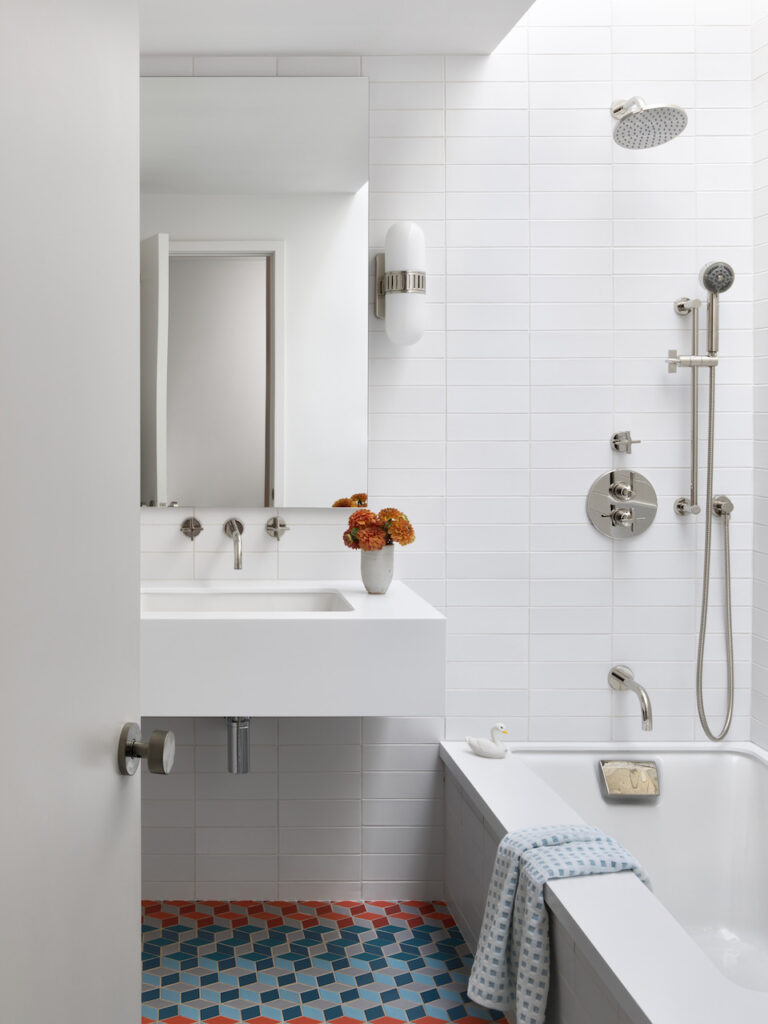
Photos by José Manuel Alorda





